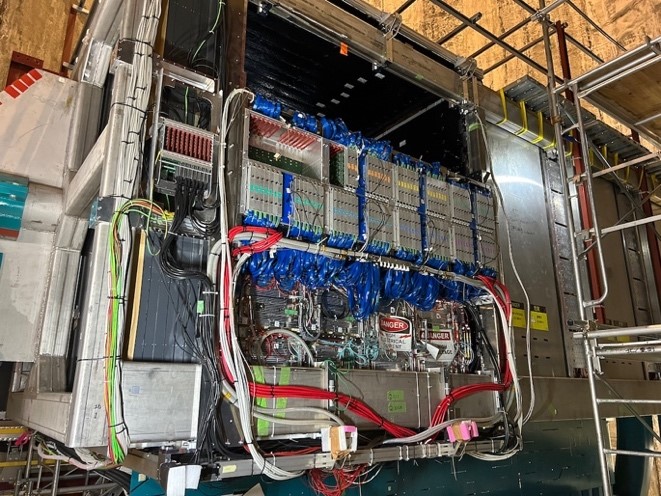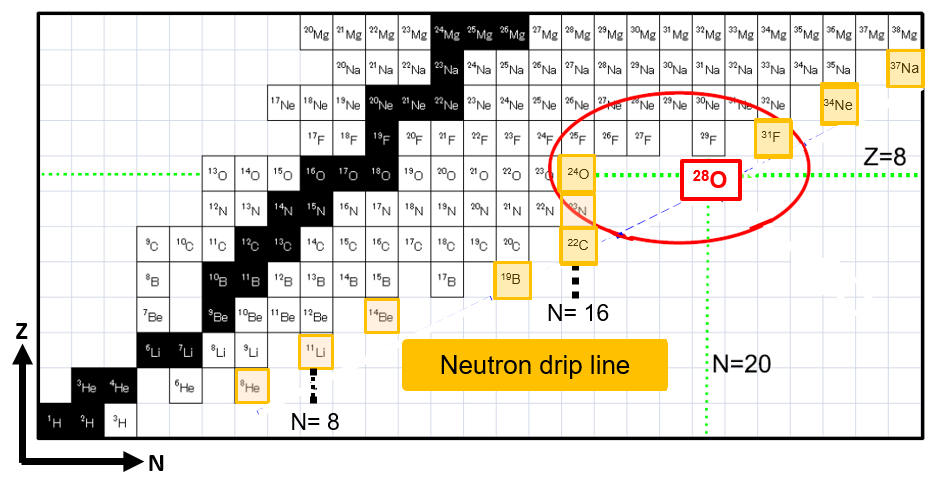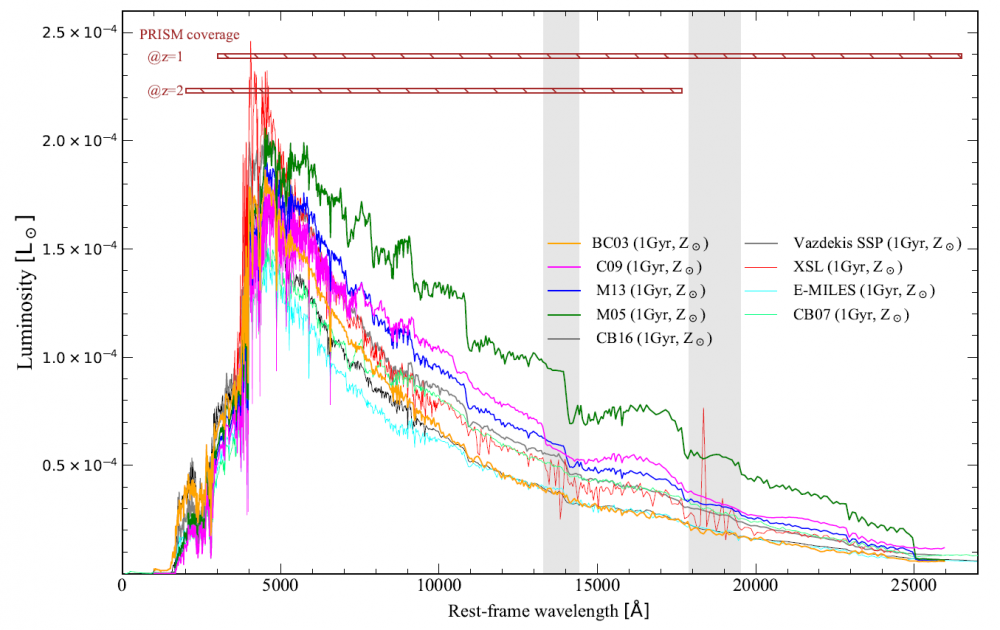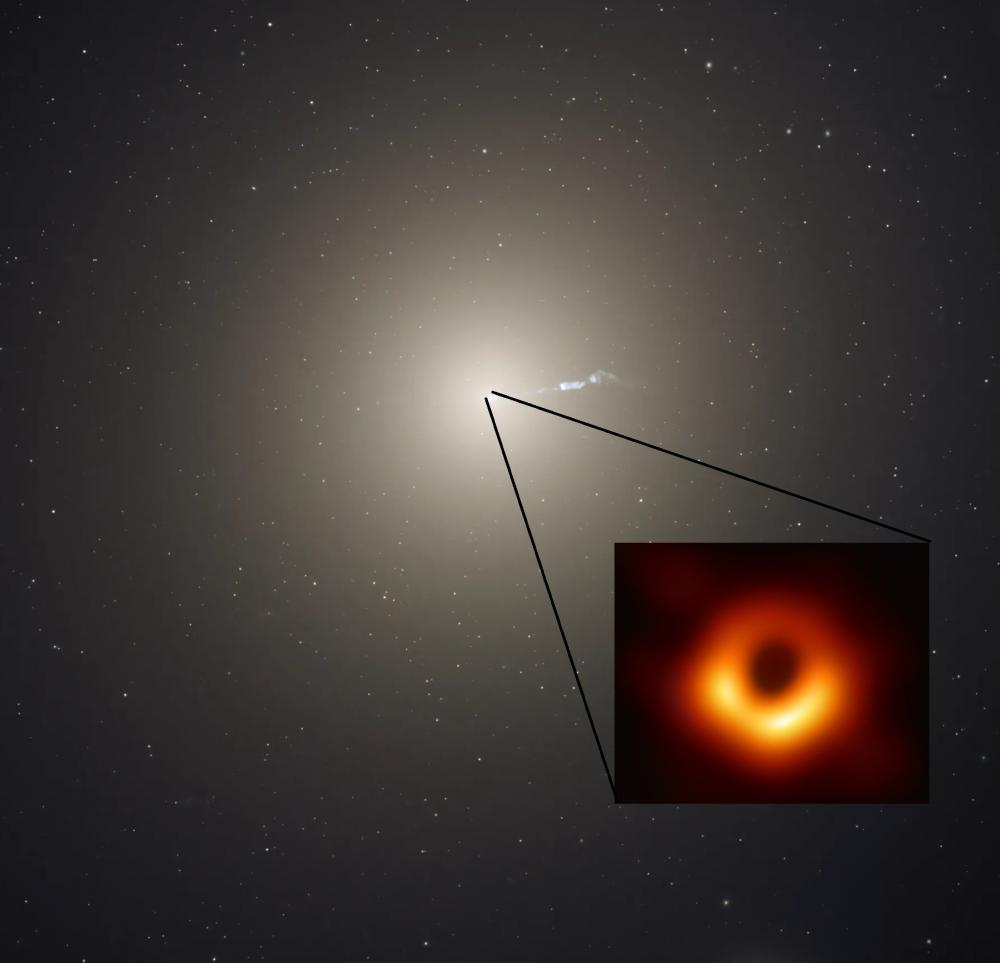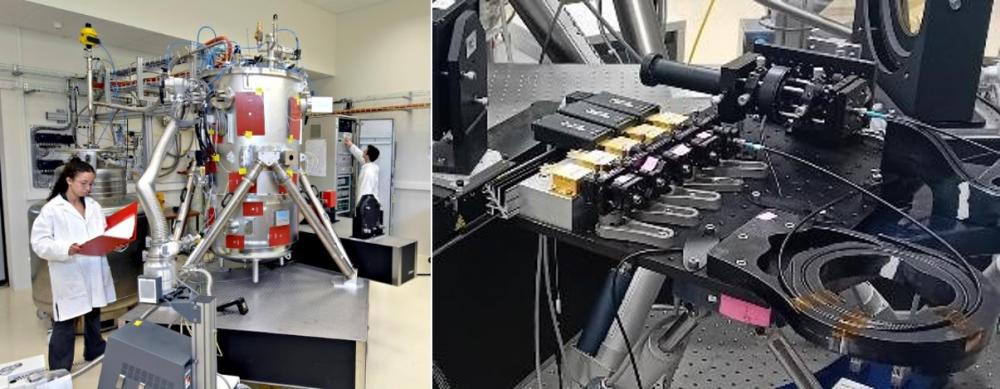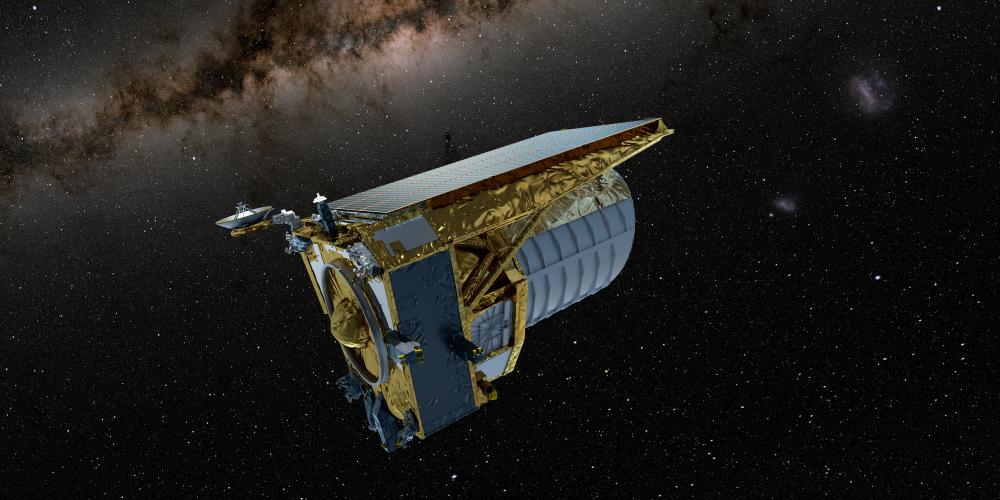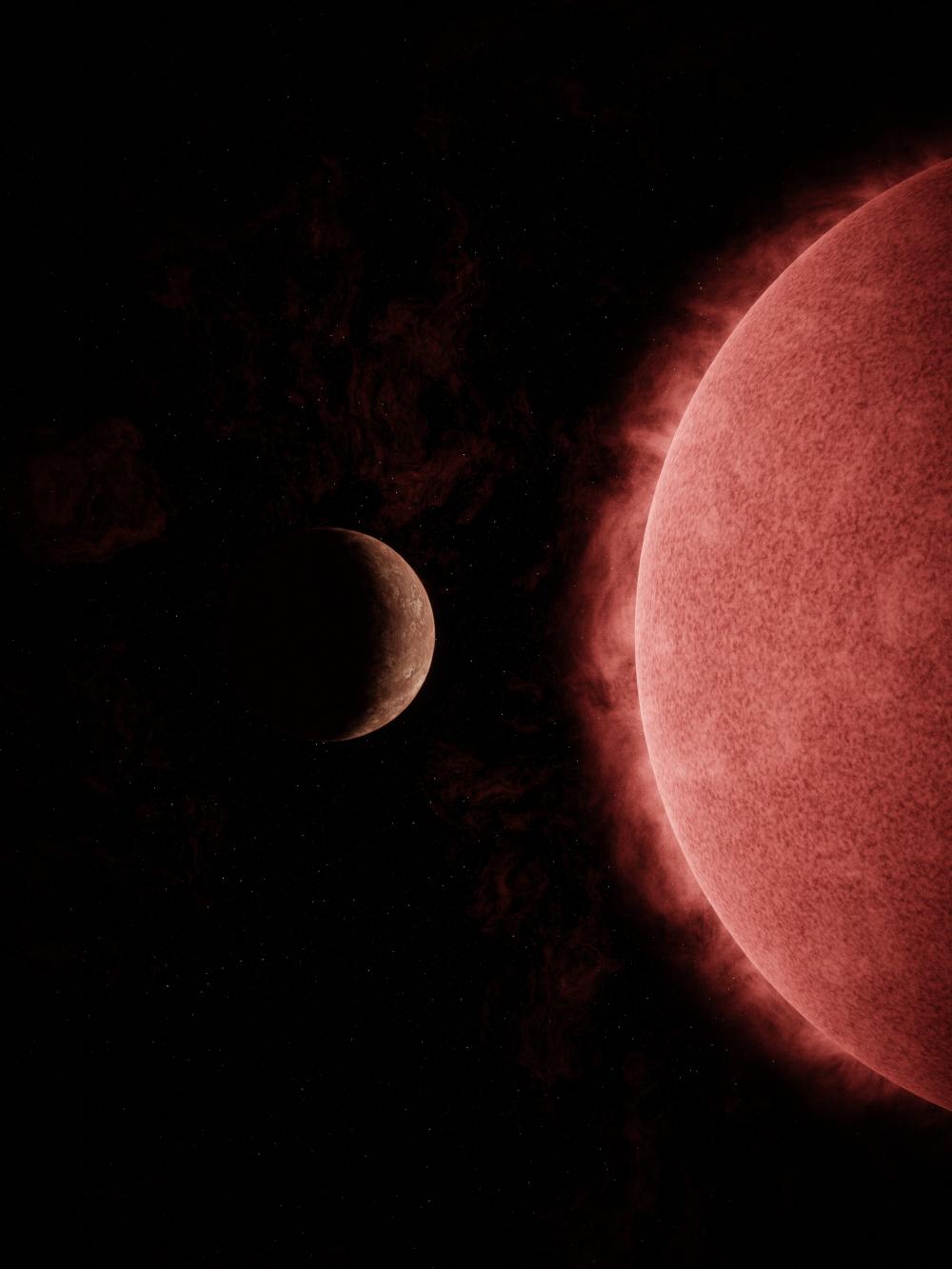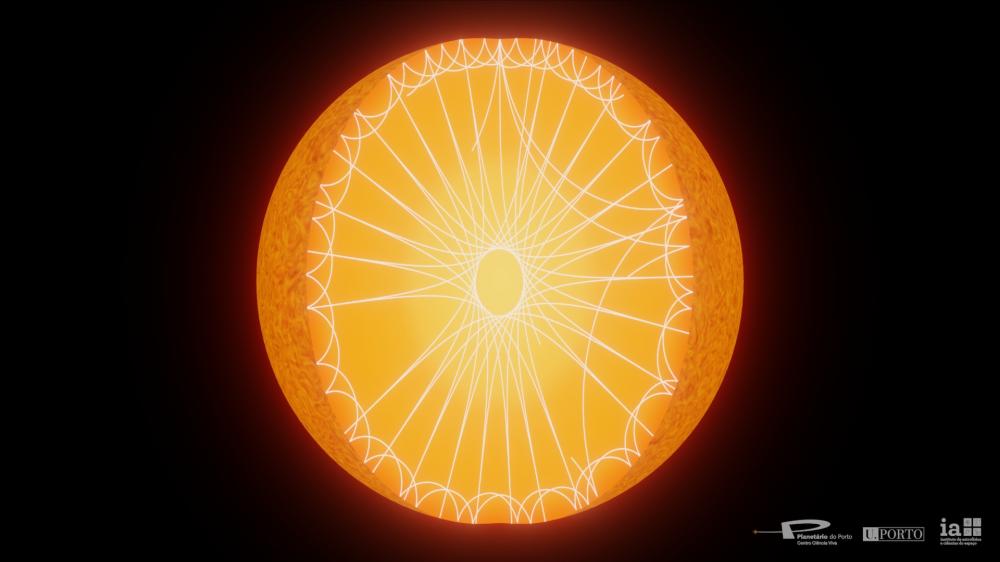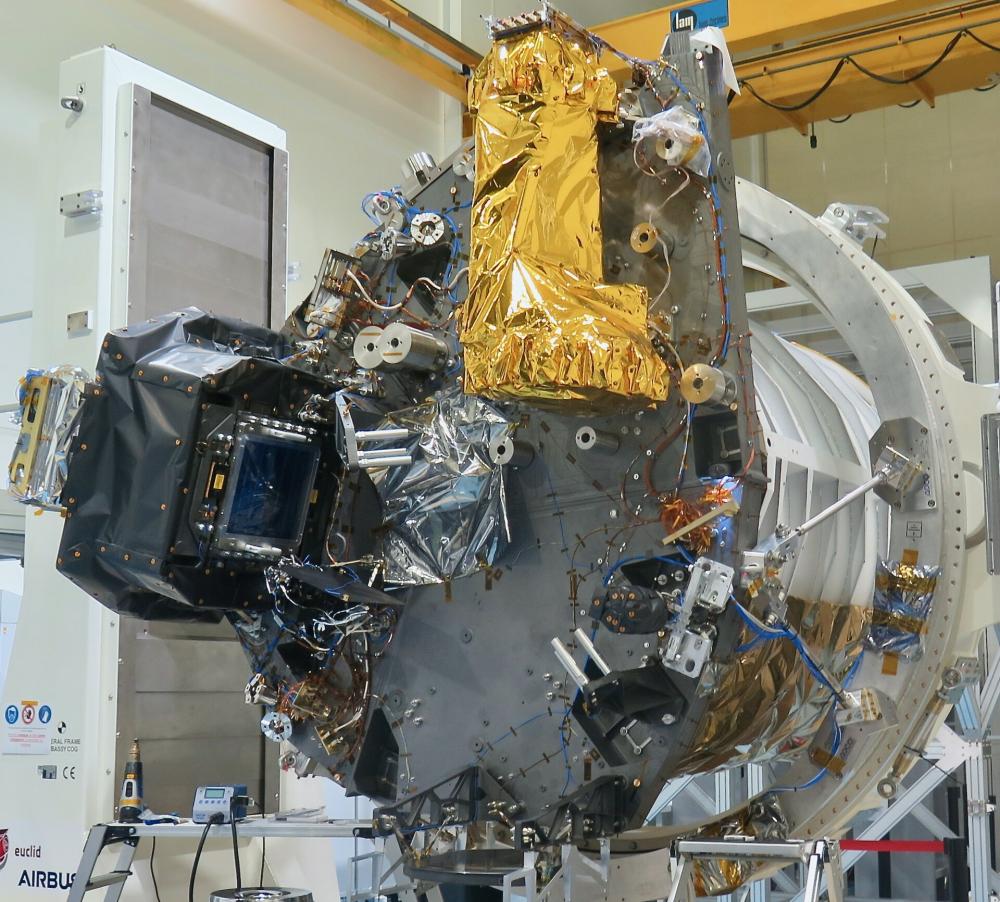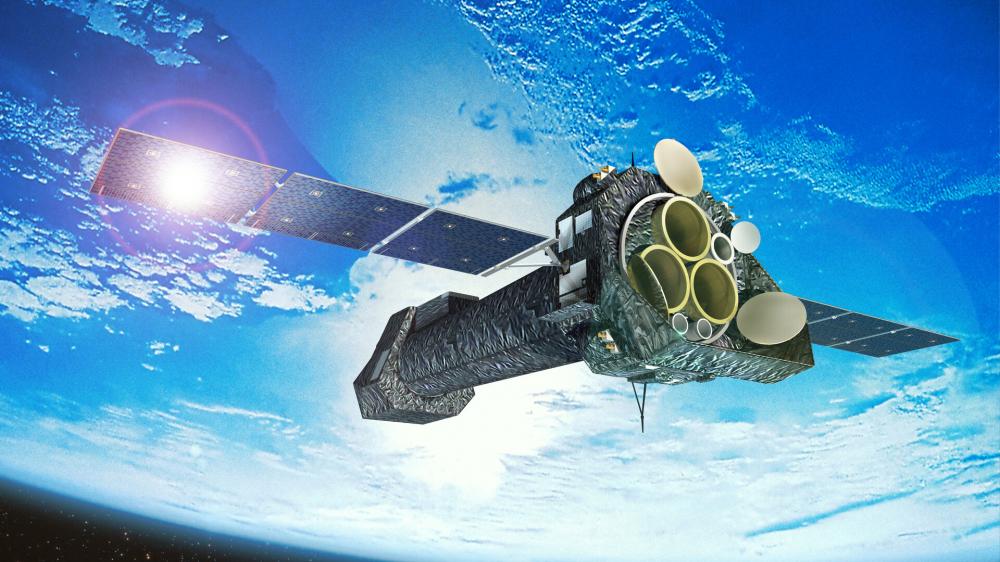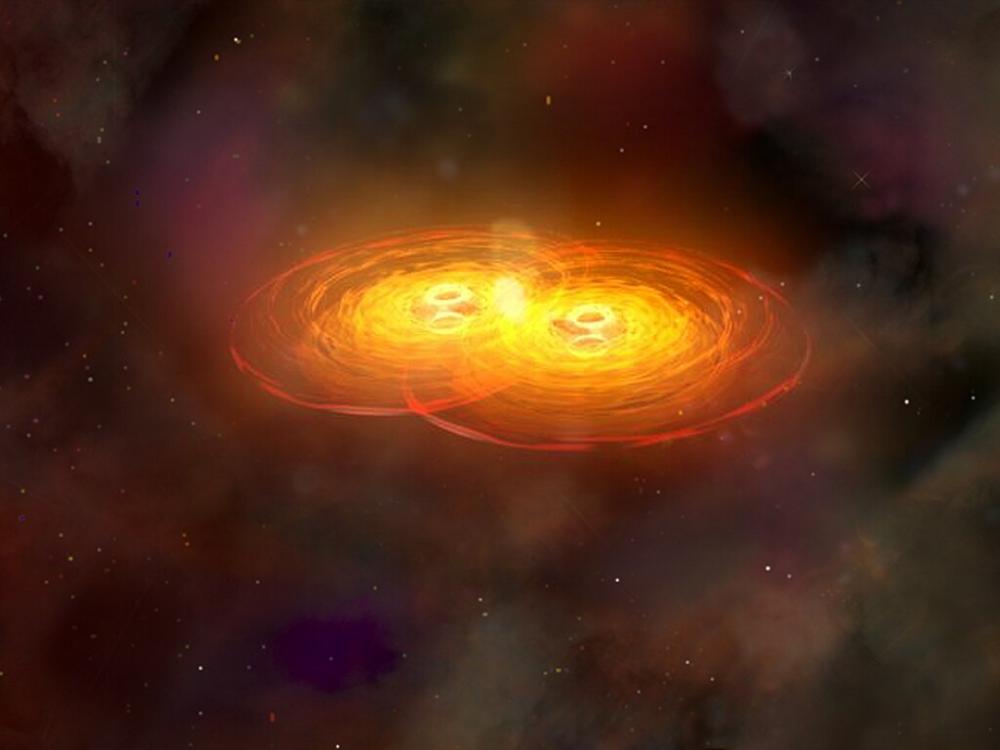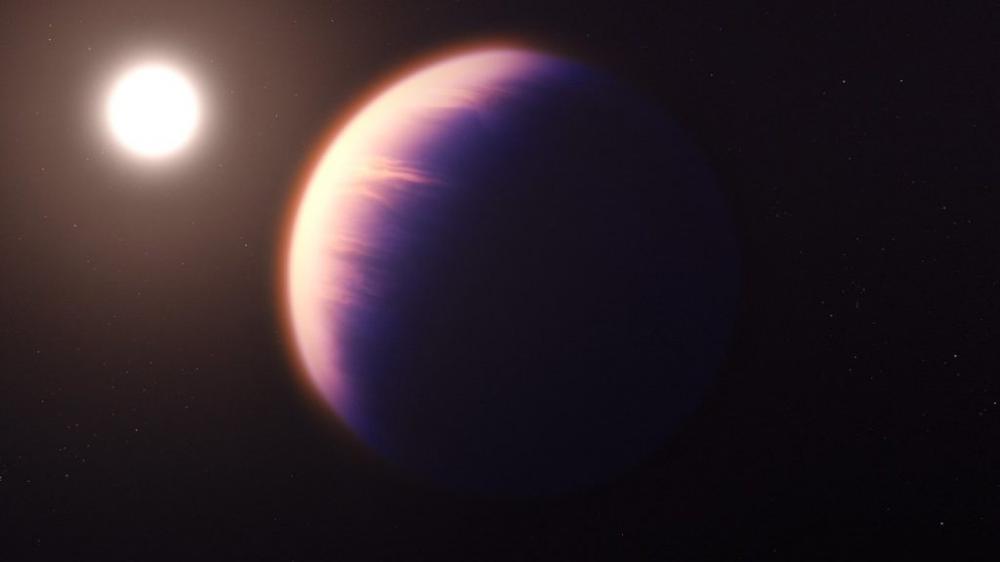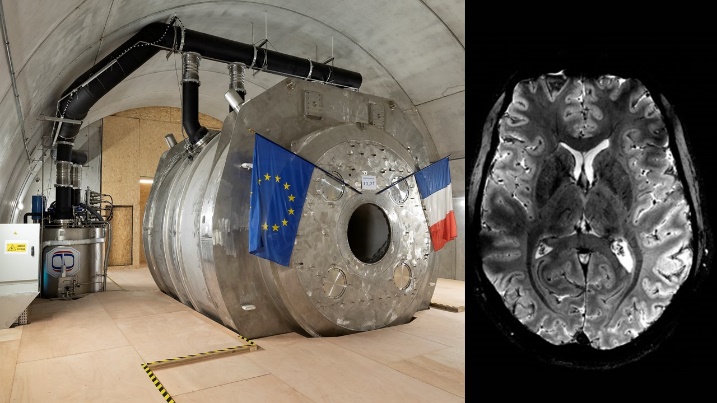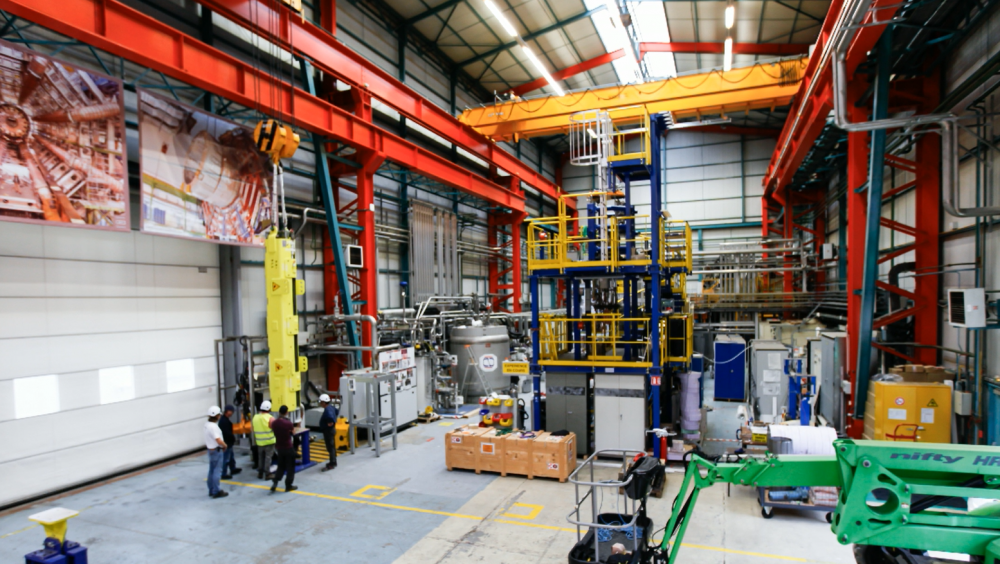With more than 5,000 scientists, engineers, technicians, administrators and students, CMS is one of the largest scientific collaborations in the world. With members from more than 240 institutes and universities in nearly 50 countries around the world, the collaboration exploits the data provided by the CMS experiment, one of the two giant general-purpose detectors installed along the circumference of the LHC, CERN's Large Hadron Collider.
Gautier Hamel de Monchenault, a physicist in the particle physics department at CEA-IRFU, was elected on Monday 12 February 2024 as the spokesperson for the CMS collaboration at CERN. He will hold this prestigious position from 1 September 2024 to 31 August 2026. He will be the 10th spokesperson for the CMS collaboration and the second French spokesperson to lead one of the four LHC experiments.
These intense years will see the end of the third data-taking period of the LHC as we know it, and the start of the installation of detector upgrades in preparation for the high-luminosity HL-LHC data, as well as the update of the European particle physics strategy.
On January 17, the T2K collaboration announced the launch of the second phase of its experiment, as stated in a press release. This phase will exploit an upgrade of the beam, whose nominal power has been increased from 450 kW to 710 kW, with the aim of reaching 1.2 MW by 2027. An improved version of the experiment's near detector ND280 is also being implemented, incorporating new time-projection chambers using resistive-Micromegas technology designed and developed by the IRFU teams. The aim of this second phase is to collect more than twice the neutrino statistics recorded during the previous phase by 2027, and to reduce the uncertainty in the measured neutrino interaction rate by a factor of two. The aim is to achieve a statistical significance of 3σ on the violation of Charge-Parity (CP) symmetry, in the event of maximum CP violation, as suggested by the results of the first phase of T2K. The discovery of CP symmetry violation in the lepton sector could explain one of the most fundamental mysteries of modern physics: the matter-antimatter asymmetry observed in the Universe.
Supported by CEA's "digital simulation" cross-disciplinary program, Irfu, the Laboratoire National Henri Becquerel of DRT and the Service d'Étude des Réacteurs et de Mathématiques Appliquées of DES teamed up to carry out a thorough review of calculations of antineutrino spectra from nuclear reactors. A complete revision of the summation method lays a new and solid foundations for these calculations, and was featured as the Physical Review C journal editor’s suggestion [1] on November 27, 2023. This revision incorporates numerous improvements in the beta decay modeling of the thousands of branches making up a reactor antineutrino spectrum, and in the use of nuclear evaluated data. It also quantifies all the systematic effects known to influence the calculations, providing for the first time a complete uncertainty model. This major advance now makes the summation model, long criticized for being approximate and incomplete, a robust tool for predicting reactor antineutrino spectra and for interpreting current and future experimental measurements. This work will likely stimulate targeted research to check and improve the experimental inputs, with potentially wide-ranging impact, from weak-interaction physics to many aspects of nuclear reactor science and technology. It also sheds interesting light on the origin of reactor antineutrino anomalies [2,3].
For the first time, an experiment has provided key observations on the spectroscopy of the neutron-rich unbound oxygen nuclei (proton number Z = 8), oxygen 28 (N = 20) and its neighboring isotope at N = 19, oxygen 27. They were produced in high-energy reactions and observed by direct detection of their decay products, 24O and three or four neutrons. The study shows that it is possible to constrain the parameters of ab initio interactions from the energy differences of the observed states with respect to the last bound isotope - 24O (N = 16). These groundbreaking results were published in the journal Nature [Nat23].
Given the complexity of studying unbound nuclei, an exceptional detection system was implemented at the world's most powerful radioactive ion beam facility: RIBF in Japan. The data were obtained by an international collaboration (Samurai21) of around a hundred physicists (from 36 laboratories), including a team* of physicists from Irfu who were responsible for operating a key detector for the measurements, Minos. The experiment, carried out on the Samurai area of the RIBF (Radioactive Ion Beam Factory) facility at RIKEN in Japan, was piloted by groups of physicists from Titech (Tokyo Institute of Technology) and by the RIKEN-RIBF teams.
Understanding the diverse stellar populations that make up galaxies is crucial to studying their formation over cosmic time. Nevertheless, some intractable stars continue to resist the modellers! Their complex nature and short lifetimes make stars in the asymptotic branch of thermally pulsating giants (TP-AGB) difficult to model, a subject of debate for decades. The James Webb Space Telescope is finally lifting the veil on their contribution to the spectrum of distant galaxies. These discoveries have implications for determining the age and stellar mass of galaxies, as well as for cosmic dust production and chemical enrichment.
This discovery has just been published in the prestigious journal Nature
On 15 October, ESA's Euclid space mission revealed the first piece of its grand map of the Universe, showing millions of stars and galaxies. This first piece of Euclid's survey was revealed at the International Astronautical Congress in Milan by ESA Director General Josef Aschbacher and Director of Science Carole Mundell.
Thanks to an agreement between CEA and ESA, two experts in image processing, Jean-Charles Cuillandre and Emmanuel Bertin, both astronomers at the Observatoire des Sciences de l'Univers de Paris-Saclay (OSUPS) and members of CEA Irfu's Astrophysics Department, produced this mosaic under ESA supervision. The project's IT logistics were handled by the OSUPS Data and Operations Centre (IDOC), with technical support from the VirtualData platform at the Paris-Saclay mesocentre.
It is well established that most galaxies harbor a supermassive black hole, long suspected of hindering the formation of new stars. However, no study had previously demonstrated a direct link between these black holes and the evolution of galaxies.
By analyzing dozens of galaxies, researchers, including those from the Department of Astrophysics at CEA – Paris-Saclay, discovered that the amount of hydrogen gas, essential for star formation, decreases in direct correlation with the mass of the central black hole, much more so than with the mass of the galaxy itself. This gas, primarily sourced from the accretion of matter from intergalactic space, appears to be blocked by black holes, preventing galaxies from replenishing external material. This phenomenon, termed "asphyxiation," suggests that black holes play a central role in the history of galaxies by limiting their growth.
This study was published in the prestigious journal Nature.
METIS is a first-generation instrument for the ELT, the Extremely Large Telescope currently under construction in the Atacama Desert in Chile, which will see its first light in 2028. Irfu has been involved in this instrument since 2018. In 2021, 14 cryomechanisms that will drive a dozen optical systems on the METIS instrument were delivered. METIS comprises two separate units: one for spectroscopy, the other for imaging. The latter contains coronagraphs, based on phase masks. The performance of the masks designed by the University of Liège has been optimised by measurements carried out on the astrophysics department's optical bench dedicated to infrared imaging. In April 2024, after 6 months of testing and performance optimisation, the three masks for N-band coronagraphy (7.5-13.5µm) were delivered to the METIS consortium. They will shortly be integrated into the instrument, which will enter the manufacturing phase in 2024.
A team of theorists from the CEA's Astrophysics Department (DAP), working within the Laboratory for Modeling Astrophysical Plasmas (LMPA), have carried out simulations using the CEA's supercomputers, with the aim of understanding the formation of stars and protoplanetary disks. Months of computational work have enabled us to achieve resolutions never achieved before, revealing new details about the formation of these objects.
The simulations yielded two major results: protostars are turbulent from birth, and protoplanetary disks form from material ejected from the star's surface.
These results have been published in Astronomy & Astrophysics: The birth and early evolution of a low-mass protostar and Formation of low-mass protostars and their circumstellar disks.
The Euclid collaboration today publishes five reference papers on the mission and ten scientific papers based on the first images unveiled to the public in November 2023, as well as the new images presented today by ESA.
This phase of preliminary observations conducted last fall provides a glimpse into the telescope's exceptional performance. The first scientific papers already reveal the discovery of newly formed rogue planets, the richness of the globular cluster population around nearby galaxies, the discovery of new low-surface-brightness dwarf galaxies in a neighboring galaxy cluster, the distribution of dark matter and intra-cluster light in galaxy clusters, and dozens of massive galaxies dating back to a time when the Universe was only 5% of its current age.
In parallel with these 15 articles, ESA today unveils five new images based on these observations, once again showcasing the sharpness of Euclid's images and its ability to observe all scales of the Universe from the optical to the near-infrared domain over a wide field of view, more than twice the surface area of the full Moon.
The CEA plays a major role in the entire mission within the Euclid collaboration, from design and implementation to its scientific exploitation over the next six years. The CEA is also heavily involved in this scientific validation program for the telescope set up by ESA. Jean-Charles Cuillandre, an astronomer at the CEA-Irfu Department of Astrophysics, analyzed these first scientific data transmitted by Euclid to create color images and enable their scientific exploitation. He is a co-author of the 10 scientific papers detailing the initial discoveries, including 2 as the first author, one on the Perseus galaxy cluster and the other on image processing.
Although significantly more common in the Universe, ultra-cool dwarf stars remain poorly understood due to their low luminosity. Consequently, our understanding of their planetary population remains limited, even though they represent a substantial fraction of the planets in our Milky Way. It is in this context that the SPECULOOS program was developed, aiming to explore exoplanets around this type of star.
Thanks to this program, an international team of researchers, including the CEA, has just discovered a new planet: SPECULOOS-3 b. Earth-sized, it orbits the ultra-cool dwarf SPECULOOS-3, located 55 light-years away. This discovery marks the second planetary system identified around this type of star, following the famous TRAPPIST-1 system, also detected through this observation program.
The characteristics of SPECULOOS-3 b make it one of the most promising rocky exoplanets for detailed characterization through emission spectroscopy with the JWST's MIRI instrument. Its sensitivity is expected to provide significant constraints on the planet's atmospheric composition or surface mineralogy, if applicable.
This discovery was published in the journal Nature Astronomy.
An international team, including the Astrophysics Department of CEA-Saclay, led by the Instituto de Astrofísica e Ciências do Espaço (IA), utilized one of the world's most advanced spectrographs to detect the smallest "stellar tremors" ever recorded in an orange dwarf star, making it the smallest and coldest star observed to date with confirmed solar oscillations. This study demonstrates that asteroseismology is a powerful technique for studying such stars, opening new perspectives in our understanding of stellar physics and, by extension, exoplanets.
This study is published in the journal Astronomy & Astrophysics Letters: “Expanding the frontiers of cool-dwarf asteroseismology with ESPRESSO: Detection of solar-like oscillations in the K5 dwarf ε Indi”.
UPDATE [03/26/2024]: Euclid's optics de-icing procedure has produced much better results than expected. The main suspect in the blurred vision of Euclid's VIS instrument was the coldest mirror behind the telescope's main optics. After warming it by just 34 degrees, from -147°C to -113°C, was enough for all the icy water to evaporate. Almost immediately, Euclid regained its sight with 15% more light from the Universe! Scientists and engineers were thus able to determine precisely where the ice had formed, and where it was likely to form again. Find out more on the ESA page.
A few layers of water ice - with the width of a DNA strand - are beginning to affect Euclid's vision; a common issue for spacecraft in the freezing cold of space, but a potential problem for this highly sensitive mission that requires remarkable precision to study the nature of the dark Universe. After months of research, Euclid's teams across Europe, including CEA-Saclay, have devised a new procedure designed to defrost the mission's optics, which involves independently heating the mirrors. The campaign unfolded as planned, and while it's still too early to definitively establish its effectiveness, preliminary analyses are promising.
XMM-Newton's energetic universe joins forces with the Euclid satellite's vision of the sky. A thousand hours of X-ray observations, over a region 40 times the size of the moon, will complement multi-wavelength studies of the cosmic evolution of galaxy clusters. A decisive association to constrain cosmological scenarios and reveal the nature of dark energy.
ISA (Laser Interferometer Space Antenna), the European Space Agency's large-scale mission to explore the Universe by observing the many sources of gravitational waves, was adopted on Thursday January 25 by ESA's Scientific Programs Committee, meaning that the concept and technology are recognized as sufficiently advanced for construction of the instrument and satellites to begin. Launch is scheduled for 2035.
This mission will revolutionize astrophysics, cosmology and fundamental physics, with 3 satellites orbiting the Sun in a 2.5 million km triangle to detect gravitational waves emitting in the millihertz band, such as supermassive black hole binaries. These 3 satellites exchange laser beams to interferometrically detect distance variations of the order of ten picometers induced by gravitational waves. Irfu is heavily involved in the LISA project, contributing to the instrument, data analysis and source science. It is in charge of the reference mass simulator and the stable structure for testing the interferometric core, the analysis of alerts, a contribution to the global analysis and co-leading of the project for France. It is also preparing the scientific exploitation and in particular the tests associated with fundamental physics, the study of the primordial Universe and the study of magnetic fields in white dwarf binary systems.
The James Webb Space Telescope has produced a new portrait of the atmosphere of exoplanet WASP-39b, a "hot Saturn" some 700 light-years away. After the first near-infrared observations in 2022, which revealed for the first time the presence of sulfur dioxide (SO2) in the atmosphere of an exoplanet, it was observed again in 2023, but this time in the far infrared, using the MIRI spectrometer. This new observation enabled the international research team, including Saclay's Astrophysics Department, to confirm the presence of this molecule in the atmosphere of WASP-39b and to constrain its abundance. This recent study demonstrates that photochemistry shapes the atmosphere of WASP-39b over a wide range of wavelengths.
To unravel this mystery, several teams with diverse skills from the Astrophysics Department had to come together, as the architecture that unites the star to its planet is highly complex. They had to combine a detailed understanding of stellar and planetary physics, exploring their interactions, with a thorough knowledge of the observations made by NASA's Kepler satellite to be able to decipher the data.
The study shows that the observed rarity seems to derive not from observational bias, but rather from physical causes. Tidal effects and magnetism are sufficient to explain qualitatively and quantitatively the migration of nearby planets around fast-rotating stars. Moreover, this migration appears to be dependent on the spectral type (fundamentally linked to mass) of the star. While these results are promising, it is nevertheless necessary to expand the sample size to better constrain scarcity and better understand the mechanisms at play. In particular, this study highlights the importance of considering the spectral type of stars (their masses) if we are to correctly model star-planet interactions.
This work is published in Astronomy & Astrophysics.
The Iseult project has unveiled the first human brain images obtained using a 11.7 teslas MRI, after almost 25 years of work. This world first was made possible thanks to the commitment of over 200 CEA employees, who believed in this extremely ambitious project from the very beginning
In the early 2000s, a Franco-German project was launched to develop ultra-high resolution imaging. One of the objectives was to build an imager whose key component was a superconducting magnet reaching 11.7 Tesla with a 900 mm aperture, but there was at this time no MRI manufacturer ready to embark on this crazy adventure alone. Based on its strong expertise in superconducting magnets acquired over the past 40 years, in particular for high energy physics and particle physics (Cern) as well as for fusion (Tore Supra, ITER), CEA decided to take up the challenge. After only a few years of design work, CEA proposed in 2006 an initial design using several innovative technological solutions. After exhaustive tests to validate all of them with several prototypes, the final fabrication started in in 2010. It took 7 years for the CEA and Alstom (now General Electric) teams to finalize the construction of this outstanding magnet, a colossus weighing 132 tons, 5 me in length and 5 meters in diameter. The magnet winding is made of 182 km of superconducting wires cooled to -271.35°C by 7,500 liters of superfluid helium.
.
Supported by CEA's "digital simulation" cross-disciplinary program, Irfu, the Laboratoire National Henri Becquerel of DRT and the Service d'Étude des Réacteurs et de Mathématiques Appliquées of DES teamed up to carry out a thorough review of calculations of antineutrino spectra from nuclear reactors. A complete revision of the summation method lays a new and solid foundations for these calculations, and was featured as the Physical Review C journal editor’s suggestion [1] on November 27, 2023. This revision incorporates numerous improvements in the beta decay modeling of the thousands of branches making up a reactor antineutrino spectrum, and in the use of nuclear evaluated data. It also quantifies all the systematic effects known to influence the calculations, providing for the first time a complete uncertainty model. This major advance now makes the summation model, long criticized for being approximate and incomplete, a robust tool for predicting reactor antineutrino spectra and for interpreting current and future experimental measurements. This work will likely stimulate targeted research to check and improve the experimental inputs, with potentially wide-ranging impact, from weak-interaction physics to many aspects of nuclear reactor science and technology. It also sheds interesting light on the origin of reactor antineutrino anomalies [2,3].
Ten years of intense collaborative work between the DACM and DIS teams at IRFU culminated during the summer of 2024 in the successful testing of the MQYYM mock-up superconducting magnet in the new quadrupole accelerator magnet test station, STAARQ. These amazing results have validated 3 key areas of research and development that are closely interconnected between the two departments:
- Design and manufacture of a new NbTi (niobium-titanium) accelerator magnet for HL-LHC with the MQYYM magnet (DACM/LEAS and DIS/LCAP-LRI),
- Large scale cryogenics at 1.9 K with the development of the STAARQ cryogenic station (DACM/LCSE and DIS/LCAP-LRI),
- Superconducting magnet testing, with qualification of the magnet protection system based on a new digital Magnet Safety System (DIS/LEI).
This test was made possible thanks to the involvement of DIS/LDISC for the control system and DIS/LEIGE for the electrical engineering and power electronics.
Ten years of intense collaborative work between the DACM and DIS teams at IRFU culminated during the summer of 2024 in the successful testing of the MQYYM mock-up superconducting magnet in the new quadrupole accelerator magnet test station, STAARQ. These amazing results have validated 3 key areas of research and development that are closely interconnected between the two departments:
- Design and manufacture of a new NbTi (niobium-titanium) accelerator magnet for HL-LHC with the MQYYM magnet (DACM/LEAS and DIS/LCAP-LRI),
- Large scale cryogenics at 1.9 K with the development of the STAARQ cryogenic station (DACM/LCSE and DIS/LCAP-LRI),
- Superconducting magnet testing, with qualification of the magnet protection system based on a new digital Magnet Safety System (DIS/LEI).
This test was made possible thanks to the involvement of DIS/LDISC for the control system and DIS/LEIGE for the electrical engineering and power electronics.
The Iseult project has unveiled the first human brain images obtained using a 11.7 teslas MRI, after almost 25 years of work. This world first was made possible thanks to the commitment of over 200 CEA employees, who believed in this extremely ambitious project from the very beginning
In the early 2000s, a Franco-German project was launched to develop ultra-high resolution imaging. One of the objectives was to build an imager whose key component was a superconducting magnet reaching 11.7 Tesla with a 900 mm aperture, but there was at this time no MRI manufacturer ready to embark on this crazy adventure alone. Based on its strong expertise in superconducting magnets acquired over the past 40 years, in particular for high energy physics and particle physics (Cern) as well as for fusion (Tore Supra, ITER), CEA decided to take up the challenge. After only a few years of design work, CEA proposed in 2006 an initial design using several innovative technological solutions. After exhaustive tests to validate all of them with several prototypes, the final fabrication started in in 2010. It took 7 years for the CEA and Alstom (now General Electric) teams to finalize the construction of this outstanding magnet, a colossus weighing 132 tons, 5 me in length and 5 meters in diameter. The magnet winding is made of 182 km of superconducting wires cooled to -271.35°C by 7,500 liters of superfluid helium.
.
Ten years of intense collaborative work between the DACM and DIS teams at IRFU culminated during the summer of 2024 in the successful testing of the MQYYM mock-up superconducting magnet in the new quadrupole accelerator magnet test station, STAARQ. These amazing results have validated 3 key areas of research and development that are closely interconnected between the two departments:
- Design and manufacture of a new NbTi (niobium-titanium) accelerator magnet for HL-LHC with the MQYYM magnet (DACM/LEAS and DIS/LCAP-LRI),
- Large scale cryogenics at 1.9 K with the development of the STAARQ cryogenic station (DACM/LCSE and DIS/LCAP-LRI),
- Superconducting magnet testing, with qualification of the magnet protection system based on a new digital Magnet Safety System (DIS/LEI).
This test was made possible thanks to the involvement of DIS/LDISC for the control system and DIS/LEIGE for the electrical engineering and power electronics.


